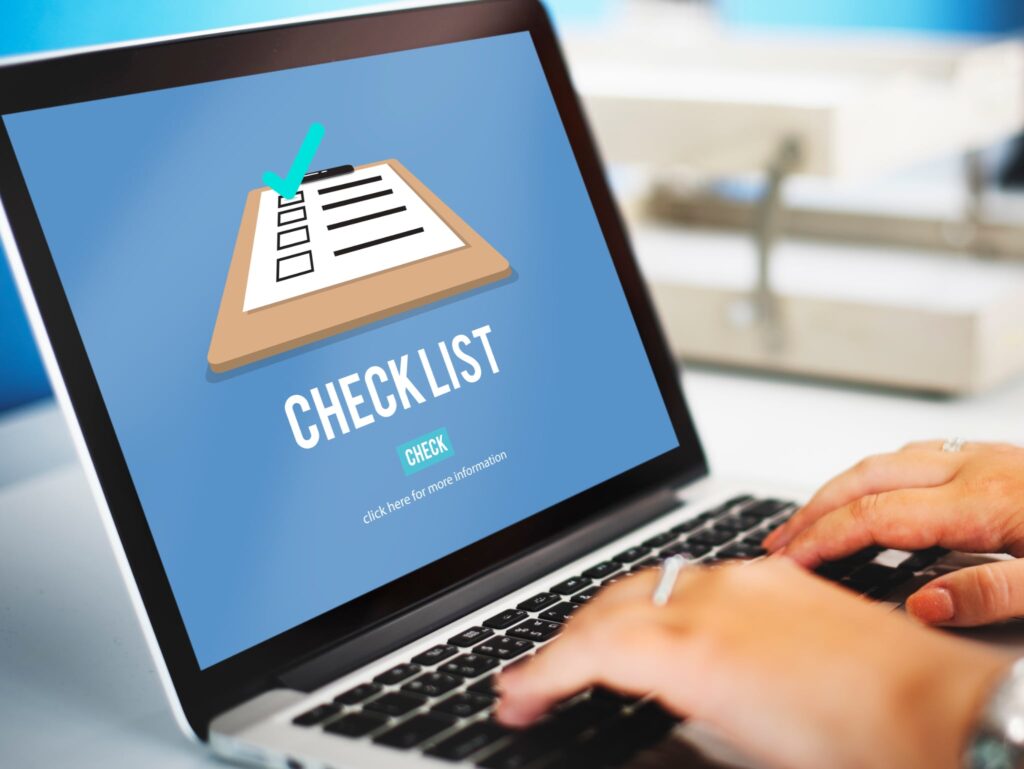
Every business leader knows that growth is never an accident. It is the result of discipline, consistency, and attention to the fine details that often go unseen. The same principle applies to your website. You can launch a beautiful site and even run a strong campaign, but if you stop there the results will fade away. SEO maintenance is the silent guardian of your digital presence. It is not about chasing vanity metrics. It is about keeping your website in fighting shape month after month so that your business attracts the right customers at the right time.
Think about it. Would you invest in a car and never service it? Of course not. Your website requires the same regular care. This checklist will guide you through a proven monthly system that ensures your site performs well, your content stays relevant, and your visibility grows consistently.
Why SEO Maintenance Is More Than Just Rankings
A common mistake is to see SEO as a one-time project. Businesses often invest heavily in optimization during launch and then treat it as complete. That approach leaves money on the table. Search engines change, user behavior shifts, and competitors keep moving forward. Without ongoing adjustments your site begins to drift into irrelevance.
- Loss of organic traffic as outdated pages slide down rankings
- Increased bounce rates due to broken links or slow loading speeds
- Missed opportunities to capture local customers who are searching for your services
- Erosion of authority when competitors consistently update and you do not
It is not about panic-driven updates when something breaks. It is about strategic monthly habits that make your digital ecosystem more resilient.
Setting the Stage for Monthly SEO Success
Before diving into the technical and creative tasks, preparation matters. Imagine building a house without a blueprint. You need tools and benchmarks to measure progress effectively.
Start with the right toolkit. Every business should have these essentials:
- Google Analytics and Google Search Console for performance tracking
- An SEO platform like Ahrefs, SEMrush, or Moz for keyword and competitor insights
- A site speed tool such as GTmetrix or PageSpeed Insights
- A crawler like Screaming Frog to catch technical issues
Next, establish benchmarks. Where are you today? Look at:
- Current keyword rankings and traffic levels
- Bounce rates and average session durations
- Conversion goals such as form submissions, calls, or purchases
These metrics form your monthly scoreboard. Without them, maintenance feels like shooting in the dark. With them, you know if your adjustments are driving real results.
Technical SEO Checkups
Your website’s technical performance is the silent engine behind your online visibility. If the engine sputters, everything else suffers. Search engines prioritize smooth user experiences, which means you cannot afford to let technical issues linger.
Start with site speed. Visitors expect near-instant loading. Anything beyond a few seconds risks abandonment. Compress images, leverage caching, and minimize unnecessary scripts. Make this a monthly habit because even small changes in plugins, themes, or hosting can impact speed.
Next, test mobile responsiveness. Mobile-first indexing means your site is judged primarily by how it performs on phones and tablets. Use Google’s Mobile-Friendly Test tool every month. Small layout issues often sneak in during updates.
Then, fix crawl errors and broken links. Imagine inviting customers into a store with locked doors. Broken links send the same message online. Run a crawler report, identify 404 errors, and either redirect or update them.
- Check for site speed drops and fix them immediately
- Confirm mobile usability is smooth on all devices
- Repair or redirect broken links before they harm rankings
- Review index coverage in Search Console to ensure new pages are being crawled
Think of this as tightening the bolts under the hood. A sleek design means nothing if your technical structure is shaky.
Content Audit and Optimization
Content is not static. It breathes. It ages. It either continues to attract and convert or it becomes stale. A monthly audit helps you stay ahead.
Start by reviewing your existing blog posts and landing pages. Are they still accurate? If you wrote a guide in 2022 and never touched it again, chances are it is slipping in value. Refresh statistics, update references, and ensure your advice reflects today’s best practices.
Keyword intent changes over time. Customers might be searching differently today than they were last quarter. Use your SEO tools to identify shifts and adjust your content accordingly. Replace outdated phrases with terms that reflect current user behavior.
Also, optimize for readability. Break long paragraphs into digestible chunks. Add subheadings where necessary. Incorporate visuals like infographics or updated images.
- Update older blog posts with fresh statistics and insights
- Re-target keywords that show declining rankings
- Add internal links to newly published content for better structure
- Ensure all CTAs remain relevant and functional
Remember, search engines reward freshness. Regular updates signal that your website is alive and trustworthy.
On-Page SEO Elements That Need Monthly Attention
On-page SEO may feel small compared to content creation or technical tuning, but these micro-adjustments create macro results. Every month, spend time polishing your titles, meta descriptions, and internal linking.
Title tags and meta descriptions act like billboards on the search highway. If they are dull or outdated, fewer people will click. Review them for clarity, keyword alignment, and character length. Update underperforming ones with more compelling copy.
Internal linking is your website’s navigation system for both users and search engines. Outdated or broken links confuse both. Make sure new pages are linked properly and older pages still serve their purpose.
Schema markup deserves attention too. It helps search engines interpret your content more clearly. Whether it’s product schema, FAQ schema, or local business markup, review it monthly to ensure accuracy.
- Refresh title tags with keywords and engaging copy
- Rewrite weak meta descriptions to boost click-through rates
- Update schema markup to reflect any new content changes
- Audit internal links to prevent orphan pages
Do not underestimate these small tweaks. They accumulate into stronger visibility and more consistent traffic.
Monitoring Keyword Rankings and Competitors
Start by tracking your primary keywords. These are the ones directly tied to your products or services. Watch for fluctuations. If you notice sudden drops, investigate. It might be an algorithm change, new competition, or technical issues.
Equally important are secondary keywords. These are the long-tail phrases and related queries that often bring in highly qualified traffic. They may not get thousands of searches, but they often convert better.
Then comes the competitor analysis. Every month, review what your rivals are publishing. Are they targeting new keywords you have not considered? Are they outranking you for terms that used to belong to you? Use tools like SEMrush or Ahrefs to spy on their movements.
- Track both primary and long-tail keywords every month
- Watch for algorithm-driven ranking shifts
- Analyze competitor content strategies
- Identify gaps where you can publish stronger or fresher content
By keeping an eye on rankings and competitors, you remain proactive instead of reactive. That is how you stay ahead of the curve.
Analyzing User Behavior and Engagement
Look at bounce rates first. A high bounce rate could mean slow loading, irrelevant content, or poor design. Identify which pages are driving people away and optimize them.
Next, study average session duration and pages per visit. If users only skim one page and leave, they may not be finding what they want. Adding more engaging internal links, multimedia, or improved copy can keep them longer.
Conversion metrics are the ultimate test. Are visitors filling out forms, calling, or buying? If traffic is high but conversions are low, something is broken in your funnel.
- Audit bounce rates and fix pages with high exits
- Encourage deeper site exploration with strategic internal linking
- Test different CTAs to improve conversion rates
- Review heatmaps or session recordings to see where users get stuck
SEO without user engagement is like having a busy storefront but no sales. Monthly behavior analysis ensures your traffic is not wasted.
Local SEO Maintenance for Small Businesses
Start with Google Business Profile. Ensure your hours, services, and contact details are accurate. Post updates or promotions to keep your profile active. Respond to reviews promptly. Both positive and negative responses build trust with searchers.
Check your local citations. Directories like Yelp, Yellow Pages, and industry-specific platforms often carry your business info. Inconsistencies hurt your credibility. Run a scan to ensure NAP (Name, Address, Phone) details match across all listings.
Local content is another monthly task. Publish blog posts or updates tied to your community. Highlight local events, partnerships, or case studies. Search engines reward businesses that connect with their immediate audience.
- Keep Google Business Profile updated and active
- Audit citations for NAP consistency
- Respond to every review with professionalism
- Create content that speaks directly to your local audience
Local SEO is not optional. It is the lifeline for small businesses that rely on nearby customers.
Link Building and Backlink Profile Clean-Up
Backlinks remain a cornerstone of SEO, but they need regular maintenance. Not all links help. Some hurt. A monthly audit ensures your link profile is strong and healthy.
Start by reviewing new backlinks. Tools like Ahrefs and Moz show where your links are coming from. Celebrate quality ones from authoritative sites. Reach out for more if you find opportunities for guest posts or partnerships.
At the same time, identify toxic backlinks. These come from spammy or irrelevant sites. Too many of these and your credibility takes a hit. Disavow them if necessary.
Do not overlook internal linking. Adding links from high-authority pages on your site to new content can boost rankings significantly. Treat internal links as a controllable part of your backlink strategy.
- Audit new backlinks for quality and relevance
- Disavow toxic links that may harm rankings
- Build relationships with local or niche sites for guest posting
- Strengthen internal linking with strategic anchor texts
Think of your backlink profile like your professional network. You want strong, reputable connections, not random associations.
Security and Website Health Checks
A secure and healthy site is non-negotiable. Customers trust you with their data, and search engines reward websites that provide a safe experience. Monthly security checks are a must.
Start with SSL certificates. Make sure your “https” is active and up to date. Expired certificates scare away users and reduce trust.
Run malware scans. Even small infections can damage rankings and reputation. Many hosting providers offer built-in scanning tools.
Check your CMS, plugins, and themes for updates. Outdated software is the easiest way for hackers to get in. Update them monthly to patch vulnerabilities.
Finally, back up your site. A backup is your insurance policy. If anything goes wrong, you can restore your site without losing progress.
- Confirm SSL certificates are valid and active
- Run malware scans to catch infections early
- Update all CMS plugins and themes
- Back up your site regularly to prevent catastrophic loss
Search engines prioritize secure sites because user trust is at stake. A monthly health check keeps your digital storefront safe and reliable.
Reporting, Tracking, and Setting Next Month’s Goals
Monthly SEO maintenance is incomplete without reporting. If you don’t measure, you’re simply guessing. Reporting helps you prove ROI and stay accountable to growth.
Start with traffic reports. Break down organic traffic trends compared to the previous month. Look at which pages brought in the most visitors. This helps you see where momentum is building.
Next, evaluate keyword performance. Are your target keywords moving up or down? Highlight both wins and losses. Wins tell you what’s working while losses reveal where you need to double down.
Conversions should be a top priority in reporting. Traffic without leads is vanity. Track form submissions, calls, or purchases tied to organic search.
Finally, set goals for the next month. Goals should be actionable and measurable. For example:
- Publish three refreshed blog posts
- Earn five new local citations
- Increase average session duration by 15%
Without reporting, SEO becomes a vague exercise. With it, you create a roadmap that ensures progress compounds month after month.
How Timpson Marketing Helps You Stay Ahead
With Timpson Marketing, you’re not just buying services. You’re gaining a partner who understands the stakes. We combine data-driven insights with hands-on execution so you can focus on running your business while knowing your online visibility is secure. Schedule a free consultation and discover how consistent, expert SEO maintenance can turn your site into a steady source of customers every single month.
- Dedicated monthly SEO audits
- Competitor tracking and strategy adjustments
- Content refreshes and keyword optimization
- Full transparency with detailed reports
If your business is ready to stop guessing and start compounding results, Timpson Marketing is the partner you need.
Frequently Asked Questions
1. What is SEO maintenance and why is it important?
SEO maintenance is the process of regularly checking and improving your website so it continues to rank well in search results. Without it, technical issues, outdated content, and changing algorithms can push your site down. A monthly SEO maintenance checklist ensures your site stays healthy, relevant, and competitive.
2. How often should I do SEO maintenance for my website?
SEO maintenance should be done on a monthly basis to stay ahead of technical errors, ranking shifts, and competitor updates. Waiting too long allows problems like broken links or outdated content to pile up. A monthly SEO maintenance checklist keeps your site consistent and reliable.
3. What tasks should be on a monthly SEO maintenance checklist?
A good checklist includes technical audits, content refreshes, keyword monitoring, and backlink reviews. You should also check site speed, update metadata, and review analytics. Each of these steps ensures your SEO strategy stays aligned with current search engine standards.
4. Does SEO maintenance improve keyword rankings?
Yes, consistent SEO maintenance helps keywords move up by keeping content fresh and technically sound. Search engines reward updated pages that serve user intent. A monthly SEO maintenance checklist ensures your rankings don’t slip.
5. How does SEO maintenance affect website traffic?
Regular maintenance keeps your website visible for relevant searches. If pages are slow or outdated, traffic naturally declines. A monthly SEO maintenance checklist protects your traffic by fixing small issues before they become major losses.
6. Do small businesses need monthly SEO maintenance?
Absolutely, because small businesses often rely heavily on local search. Without regular updates, competitors can easily outrank you in map packs and local listings. A monthly SEO maintenance checklist helps keep your business visible to nearby customers.
7. What tools are best for monthly SEO maintenance?
Popular tools include Google Analytics, Search Console, SEMrush, Ahrefs, and Screaming Frog. Each tool provides insights into traffic, rankings, or technical health. Using them regularly ensures your SEO maintenance checklist is accurate and data-driven.
8. How do I check my website for SEO errors?
Run a monthly crawl with tools like Screaming Frog or Ahrefs to spot broken links, redirects, or indexing issues. Google Search Console also highlights errors affecting visibility. Adding this step to your SEO maintenance checklist helps prevent ranking drops.
9. Can outdated content hurt SEO performance?
Yes, outdated content signals to search engines that your site may no longer be relevant. It also frustrates users when they find old information. A monthly SEO maintenance checklist includes updating or refreshing older posts for accuracy.
10. Should I monitor backlinks every month?
Yes, because new backlinks can boost authority while toxic ones can harm rankings. Reviewing your backlink profile monthly helps you disavow harmful links and build strong new ones. This is a crucial part of any SEO maintenance checklist.
11. What role does site speed play in SEO maintenance?
Site speed directly impacts user experience and rankings. Slow-loading pages increase bounce rates, which hurts visibility. A monthly SEO maintenance checklist should include performance testing to keep your site fast.
12. How can SEO maintenance improve conversions?
Maintenance ensures your site is easy to navigate, loads quickly, and has clear calls-to-action. When visitors have a smooth experience, they are more likely to convert. A monthly SEO maintenance checklist keeps both traffic and conversions growing.
13. What’s the difference between SEO setup and SEO maintenance?
SEO setup is the initial optimization done when a site is launched or reworked. SEO maintenance is the ongoing care needed to keep those optimizations effective. Without a monthly checklist, initial SEO work quickly loses impact.
14. How do I know if my SEO maintenance is working?
Track organic traffic, keyword rankings, and conversions every month. If you see steady or improved performance, your maintenance efforts are paying off. A monthly SEO maintenance checklist makes it easy to measure results.
15. What happens if I skip SEO maintenance?
Skipping maintenance allows issues like broken links, slow speed, and outdated content to build up. Over time, rankings drop and visibility declines. Following a monthly SEO maintenance checklist prevents costly setbacks.
16. Is local SEO part of monthly SEO maintenance?
Yes, local SEO tasks like updating Google Business Profile and checking citations should be part of your routine. This keeps your information accurate across search platforms. Adding local tasks to your SEO maintenance checklist helps attract nearby customers.
17. Can SEO maintenance prevent penalties from Google updates?
While no site is completely immune, regular maintenance reduces risks from algorithm changes. By keeping content fresh, technical issues fixed, and links clean, you align with Google’s guidelines. A monthly SEO maintenance checklist helps you adapt quickly to updates.
18. How long does monthly SEO maintenance take?
The time depends on website size and complexity. A small business site may need only a few hours per month, while larger sites require more detailed audits. Sticking to a monthly SEO maintenance checklist keeps the workload manageable.
19. Is SEO maintenance different for e-commerce websites?
Yes, e-commerce sites often require more frequent checks on product pages, schema markup, and site speed. Regular updates ensure smooth shopping experiences and higher search visibility. A monthly SEO maintenance checklist for e-commerce must include these extra steps.
20. Can I do SEO maintenance myself or should I hire a professional?
You can handle basic tasks like updating content and checking site speed on your own. However, technical audits and competitor analysis are often best done by experts. Using a monthly SEO maintenance checklist helps you decide what to manage yourself and what to outsource.




Leave A Comment